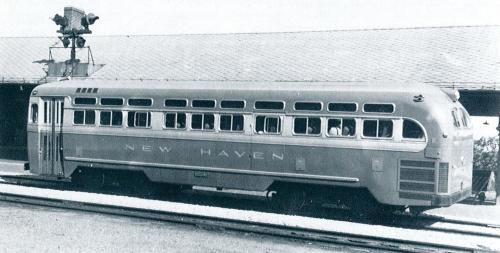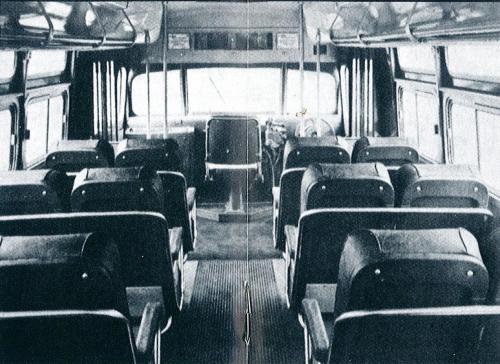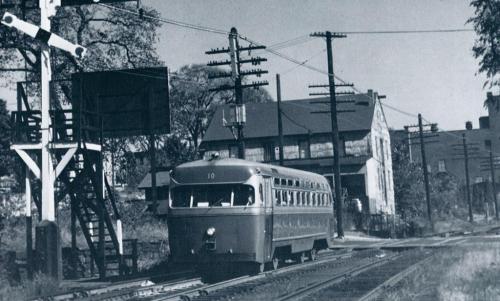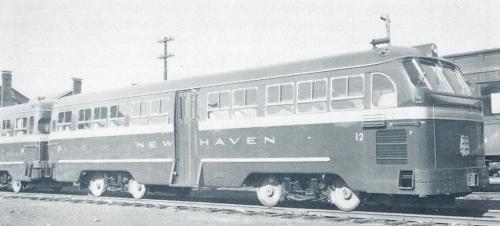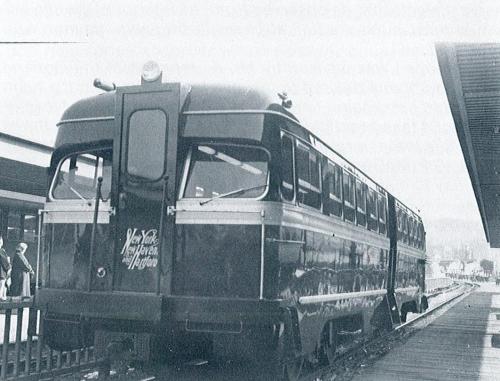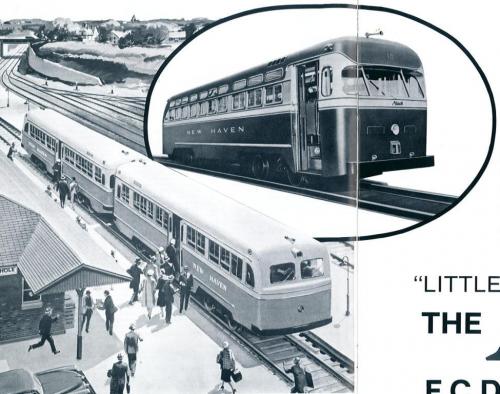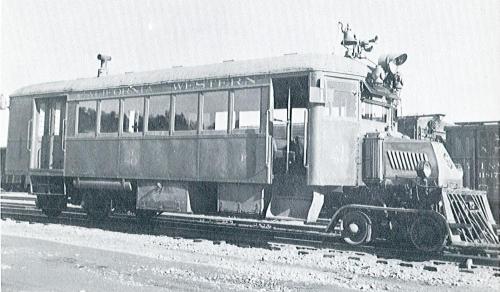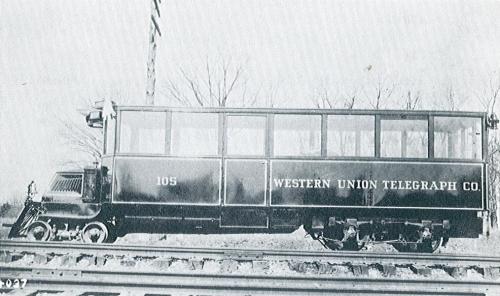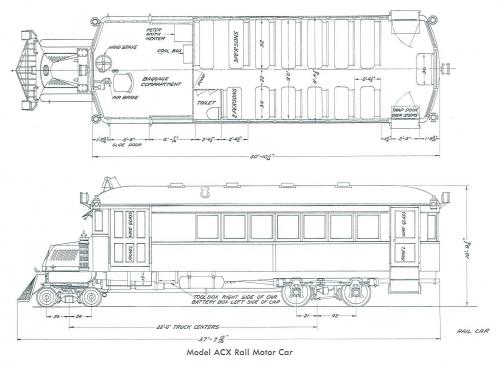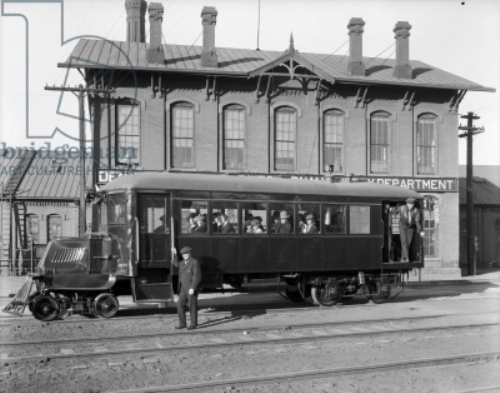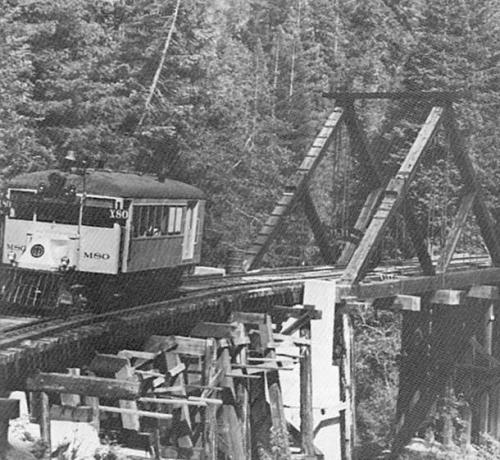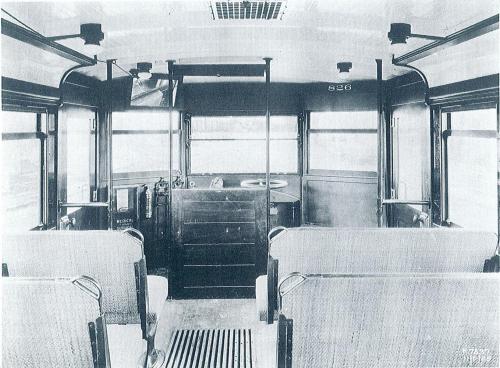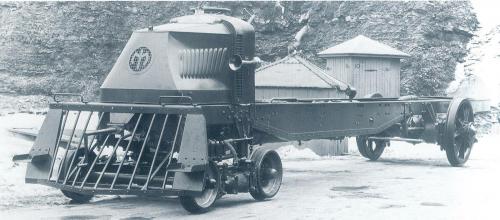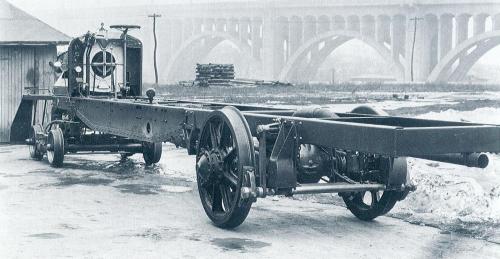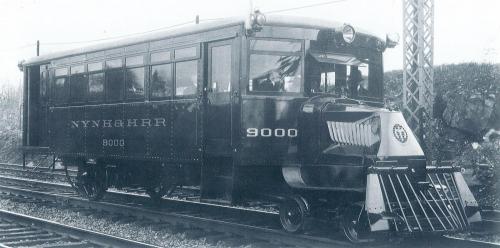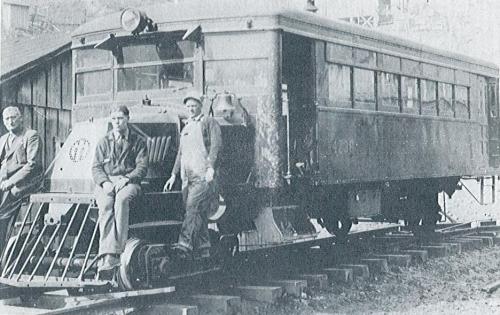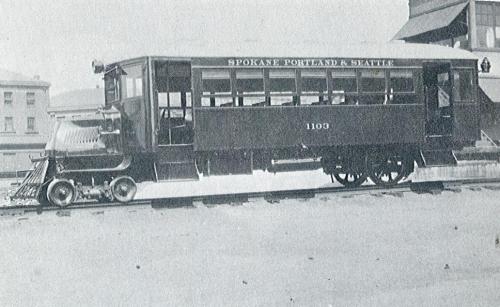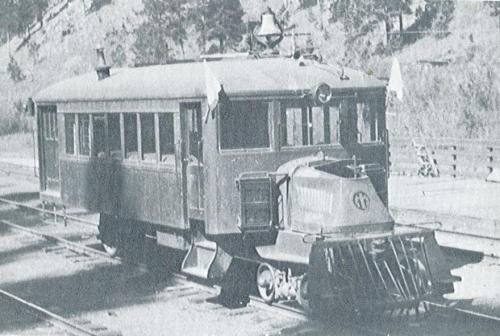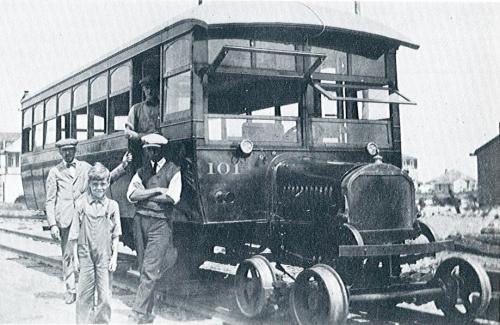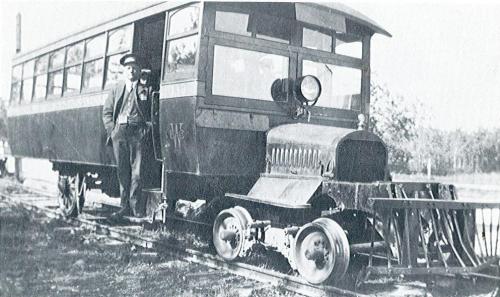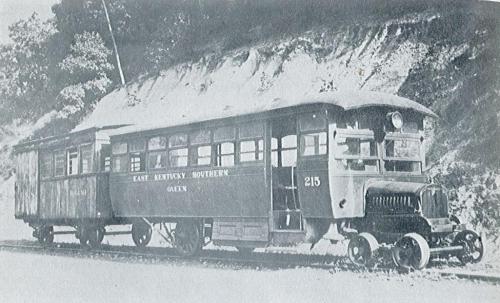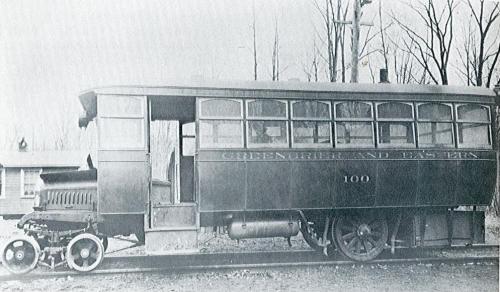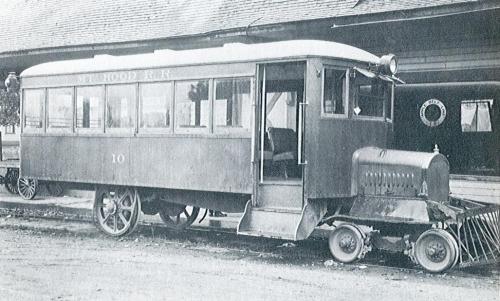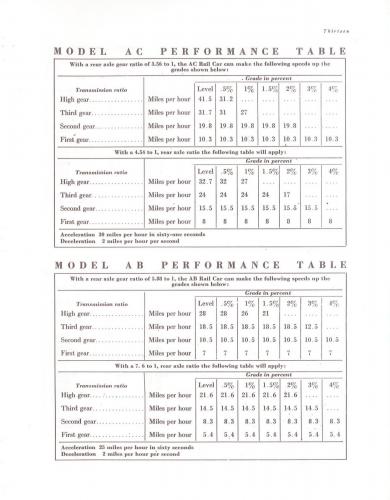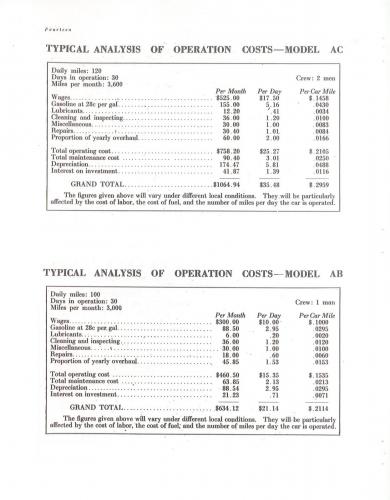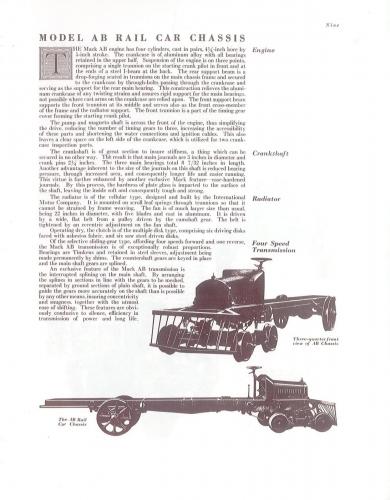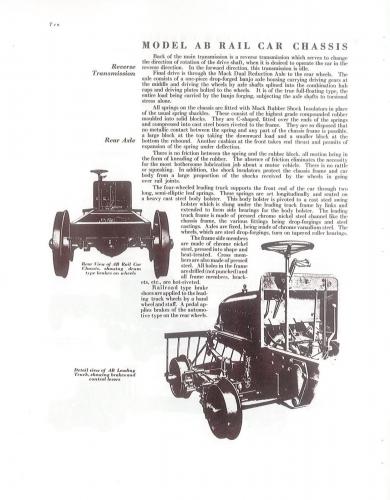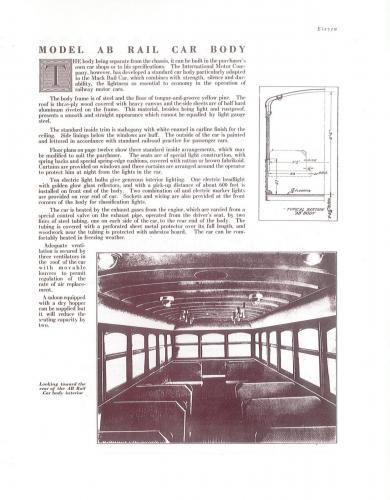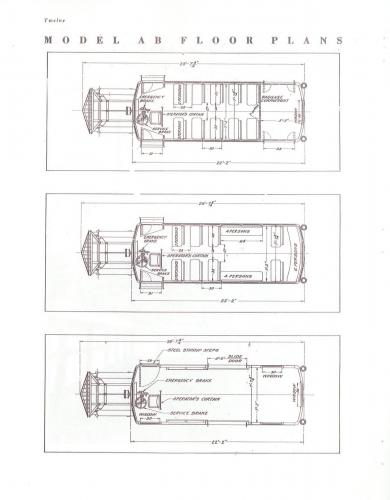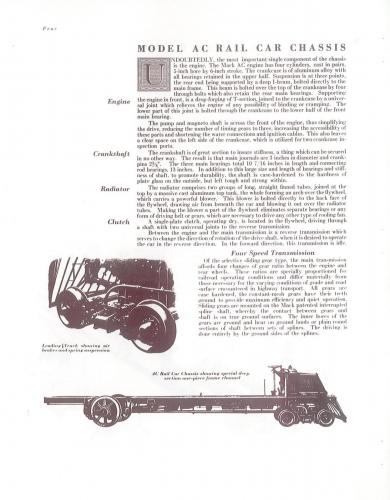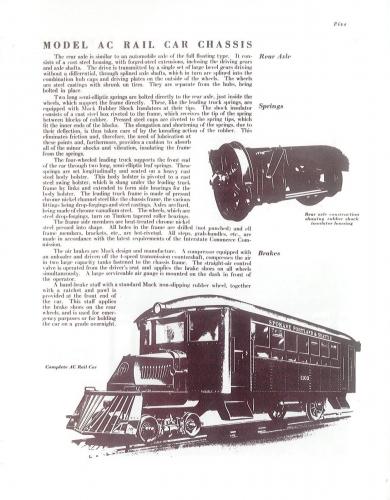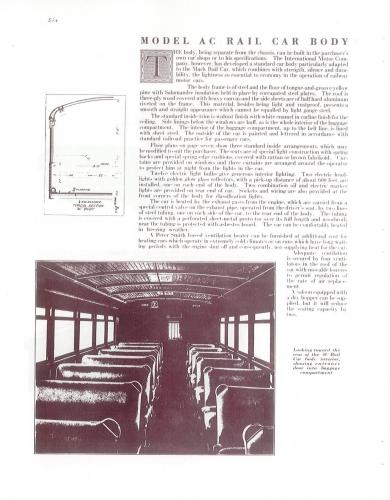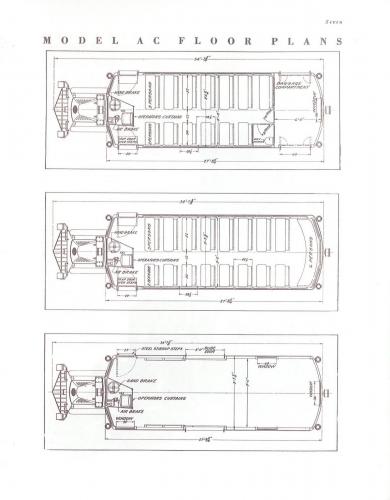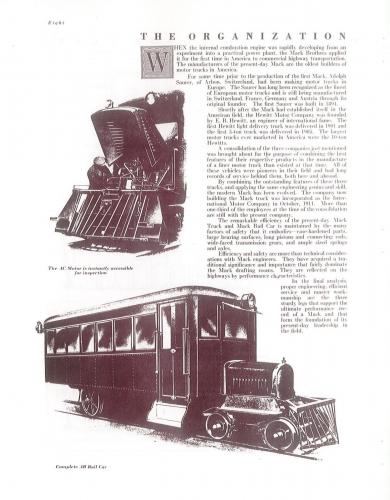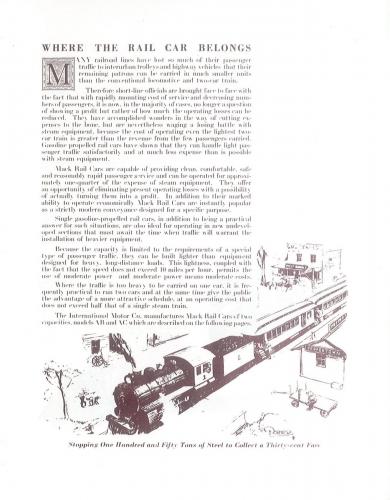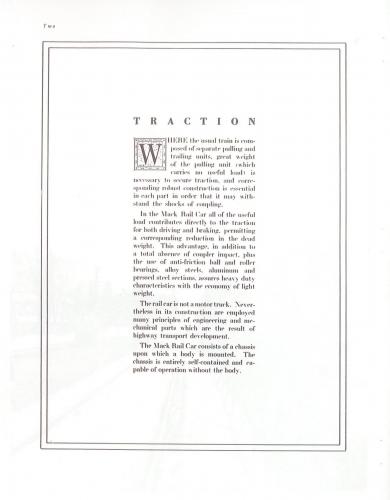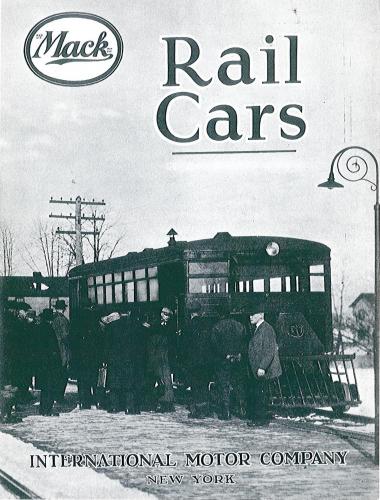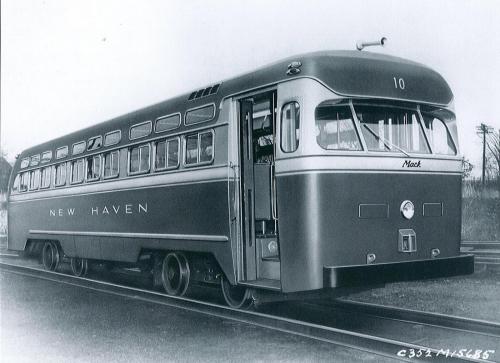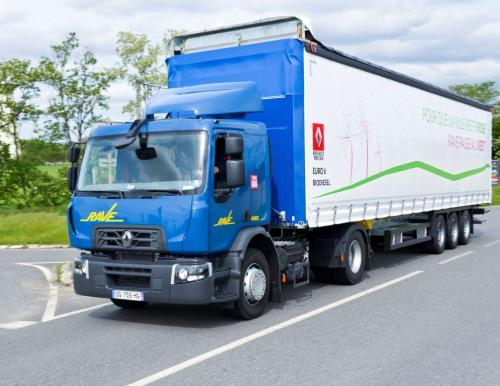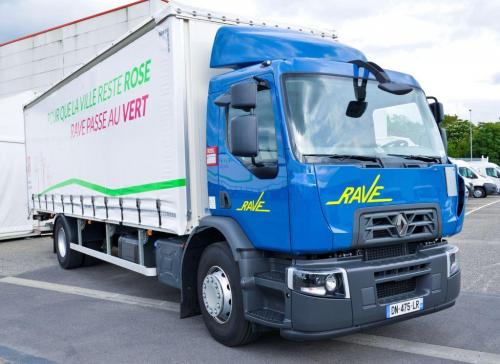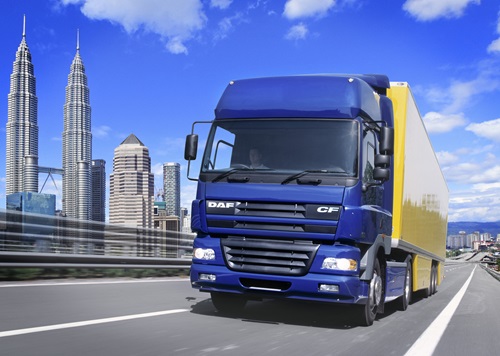
kscarbel2
Moderator-
Posts
18,734 -
Joined
-
Days Won
114
Content Type
Profiles
Forums
Gallery
Events
Blogs
BMT Wiki
Collections
Store
Everything posted by kscarbel2
-
Mack Rail – The Rail Cars
kscarbel2 replied to kscarbel2's topic in Modern Mack Truck General Discussion
Speaking of aviation, Mack chief engineer and vice president Alfred Masury was a strong proponent of rigid airships.Had he not met an untimely death (http://www.bigmacktrucks.com/index.php?/topic/39563-mack-remembrance-alfred-fellows-masury/?hl=masury), I wouldn't have been a bit surprised if he had taken Mack Trucks into some aspect of aviation. From another angle, legendary Mack President and CEO Zenon C.R. Hansen was an early supporter of corporate aviation. -
Mack Rail – The Rail Cars
kscarbel2 replied to kscarbel2's topic in Modern Mack Truck General Discussion
-
Mack Rail – The Rail Cars
kscarbel2 replied to kscarbel2's topic in Modern Mack Truck General Discussion
-
Mack Rail – The Rail Cars
kscarbel2 replied to kscarbel2's topic in Modern Mack Truck General Discussion
-
Mack Rail – The Rail Cars
kscarbel2 replied to kscarbel2's topic in Modern Mack Truck General Discussion
-
Mack Rail – The Rail Cars
kscarbel2 replied to kscarbel2's topic in Modern Mack Truck General Discussion
Providing Railway Operators with Innovative Solutions Mack AB model rail cars Aberdeen & Rockfish RailroadBernabe S. Batista (Cuba)Bowdon Railway CompanyCamp A.A. Humphrey (U.S. Army)Central West Virginia & Southern RailroadChesapeake WesternChestnut Ridge RailwayColumbian National RailwaysCondon, Kinzua & Southern RailroadEast Kentucky Southern RailwayGilmore & Pittsburgh RailroadGreenbrier & Eastern RailroadGuantanamo & Western (Cuba)Hawaii Construction RailwayManitoba Power CompanyManitoba Hydro ElectricMount Hood RailroadNarragansett Pier RailroadNew Mexico Central RailroadPacific Gas & ElectricPittsburgh, Lisbon & Western RailroadSewell Valley RailroadSpalding Miami Lumber CompanyStone Harbor RailroadTela Railroad (serving the United Fruit Company - Honduras)Tropical Oil Company (Columbia – subsidiary of Toronto-based Imperial Oil Ltd.)The Atchinson, Topeka & Sante Fe RailroadThe Phoenix Utility CompanyWillamina & Grand Ronde RailroadWinnipeg Electric CompanyMack AC model rail cars Artemus & Jellico RailroadBuffalo Creek & Gauley RailroadChicago, Burlington & Quincy RailroadCovadonga Railway (Cuba)Great Northern RailroadHavana CentralLewisburg, Milton & Watsonville Passenger Railway CompanyNarragansett Pier RailroadNew York, New Haven & Hartford RailroadNorthern Pacific RailroadRapid City, Back Hills & Western RailroadSoutheast LumberSpokane, Portland & Seattle railroadThe Pennsylvania & Kentucky RailroadWinnipeg Hydro ElectricMack ACX model rail cars California Western RailroadChicago, Rock Island & Pacific RailroadUnited Railways of HavanaWestern Union TelegraphMack ACP model rail cars Chicago, Rock Island & Pacific Railroad Mack AQ model rail cars Chicago, Burlington & Quincy RailroadChicago, Rock Island & Pacific Railroad New York CentralPennsylvania RailroadSouth Manchurian Railway (Korea) Mack AR model rail cars Great Northern RailwayMonongahela RailwayPittsburgh & Lake Erie RailroadReading CompanySouthern Pacific Lines Mack AS model rail cars Canadian NationalGreater Winnipeg Water District RailwayWinnipeg ElectricMack BK model rail cars Wilkes-Barre & Hazleton RailroadMack BX model rail cars Patino Railroad (Bolivia - tin mining)Mack FCD model rail bus Ferro-Carril de Langreo (Spain) New York, New Haven & Hartford RailroadSperry Rail Service -
Mack Rail – The Rail Cars
kscarbel2 replied to kscarbel2's topic in Modern Mack Truck General Discussion
Mack Rail – The Sustainable and Economical Approach to Public Rail Transport No coaling plantsNo watering tanksNo ash pitsNo steaming delaysNo fuel consumed while standingNo night fire-bankingNo excess heavy equipment wear on tracks and bridgesNo smoke or cinders to necessitate frequent cleaning. -
Mack Rail – The Rail Cars
kscarbel2 replied to kscarbel2's topic in Modern Mack Truck General Discussion
-
Mack Rail – The Rail Cars
kscarbel2 replied to kscarbel2's topic in Modern Mack Truck General Discussion
-
Mack Rail – The Rail Cars
kscarbel2 replied to kscarbel2's topic in Modern Mack Truck General Discussion
-
Mack Rail – The Rail Cars
kscarbel2 replied to kscarbel2's topic in Modern Mack Truck General Discussion
The Organization behind the Product When the internal combustion engine was rapidly developing from an experiment into a practical power plant, the Mack Brothers applied it for the first time in America to commercial highway transportation. The manufacturers of the present-day Mack are the oldest builders of motor trucks in America. For some time prior to the production of the first Mack, Adolph Saurer, of Arbon, Switzerland, had been making motor trucks in Europe. The Saurer has long been recognized as the finest of European motor trucks and is still being manufactured in Switzerland, France, Germany and Austria through its original founder. The first Saurer was built in 1894. Shortly after the Mack truck had established itself in the American market, the Hewitt Motor Company was founded by Edward R. Hewitt, an engineer of international fame. The first Hewitt light delivery truck was delivered in 1901, and the first 5-ton truck was delivered in 1905. The largest motor trucks ever marketed in America were the 10-ton Hewitts. A consolidation of Mack Brothers, Saurer and Hewitt was brought about for the purpose of combining the best features of their respective products in the manufacture of a finer motor truck than existed at that time. All of these vehicles were pioneers in their field and had long records of service behind them, both in America and abroad. By combining the outstanding features of these three trucks, and applying the same engineering genius and skill, the modern Mack truck has been evolved. The company now building the Mack truck was incorporated as the International Motor Company in October, 1911. More than one-third of the employees at the time of the consolidation are still with the present company. The remarkable efficiency of the present-day Mack Truck and Mack Rail Car is maintained by the many factors of safety that it embodies – case-hardened parts, large bearing surfaces, long pistons and connecting rods, wide-faced transmission gears, and ample sized springs and axles. Efficiency and safety are more than technical considerations with Mack engineers. They have acquired a traditional significance and importance that fairly dominate the Mack drafting rooms. They are reflected on the highways by performance characteristics. In the final analysis, proper engineering, efficient service and master workmanship are the three sturdy legs that support the ultimate performance record of a Mack truck, and that form the foundation of its present-day leadership in the field. . -
Mack Rail – The Rail Cars
kscarbel2 replied to kscarbel2's topic in Modern Mack Truck General Discussion
Where the rail car belongs Many railroad lines have lost so much of their passenger traffic to inter-urban trolleys and highway vehicles that their remaining patrons can be carried in much smaller units than the conventional locomotive and two-car train. Therefore short-line officials are brought face to face with the fact that with rapidly mounting cost of service and decreasing numbers of passengers, it is now, in the majority of cases, no longer a question of showing a profit but rather of how much the operating losses can be reduced. They have accomplished wonders in the way of cutting expenses to the bone, but are nevertheless waging a losing battle with steam equipment, because the cost of operating even the lightest two-car train is greater than the revenue from the few passengers carried. Gasoline propelled rail cars have shown that they can handle light passenger traffic satisfactorily and at much less expense than is possible with steam equipment. Mack Rail Cars are capable of providing clean, comfortable, safe and reasonably rapid passenger service, and can be operated for approximately one-quarter of the expense of steam equipment. They offer an opportunity of eliminating present operating losses with a possibility of actually turning them into a profit. In addition to their marked ability to operate economically, Mack Rail Cars are instantly popular as a strictly modern conveyance designed for a specific purpose. Single gasoline-propelled rail cars, in addition to being a practical answer for such situations, are also ideal for operating in new undeveloped sections that must await the time when traffic will warrant the installation of heavier equipment. Because the capacity is limited to the requirements of a special type of passenger traffic, they can be built lighter than equipment designed for heavy, long-distance loads. This lightness, coupled with the fact that the speed does not exceed 10 miles per hour, permits the use of moderate power, and moderate power means moderate costs. Where the traffic is too heavy to be carried on one car, it is frequently practical to run two cars, and at that time give the public the advantage of a more attractive schedule, at an operating cost that does not exceed half that of a single steam train. The International Motor Company manufactures Mack Rail Cars of two capacities, models AB and AC. . -
Mack Rail – The Rail Cars
kscarbel2 replied to kscarbel2's topic in Modern Mack Truck General Discussion
Mack Rail – Meeting mobility needs with innovative and environmentally-friendly solutions Where the usual train is composed of separate pulling and trailing units, great weight of the pulling unit (which carries no useful load) is necessary to secure traction, and corresponding robust construction is essential in each part in order that it may withstand the shocks of coupling. In the Mack Rail Car, all of the useful load contributes directly to the traction for both driving and braking, permitting a corresponding reduction in the dead weight. This advantage, in addition to a total absence of coupler impact, plus the use of anti-friction ball and roller bearings, alloy wheels and aluminum and pressed steel sections assures heavy duty characteristics with the economy of light weight. The rail car is not a motor truck. Nevertheless, in its construction are employed many principles of engineering and mechanical parts which are the result of highway transport development. The Mack Rail Car consists of a chassis upon which a body is mounted. The chassis is entirely self-contained and capable of operation without the body. . -
Mack Trucks Inc., America’s oldest commercial vehicle manufacturer, is also the oldest rail motor car manufacturer in the United States. The company sold its first “rail car” to the Uintah Railway Company of Colorado in 1903. Construction began at Mack Trucks’ Brooklyn plant on Atlantic Avenue and was completed in Allentown’s No.1 Division. Mack delivered its second rail car to another Colorado operator, the Silverton Northern Railroad, on August 22, 1905 where it provided passenger service between Eureka and Silverton. The company designed and produced rail cars (also referred to as rail buses), self-propelled railway passenger cars and locomotives. Always leading America forward with cutting edge technology, Mack Trucks was a pioneer in the United States of the concept now commonly known as "light rail". From the versatile Model AB rail bus to the highly advanced Model FCD, Mack Trucks met the needs of both rural communities and cities worldwide with affordable, efficient and versatile public transport. Gasoline, gas-electric and diesel-electric “rolling stock” was produced at the company’s plants in Allentown, Pennsylvania and Plainfield, New Jersey. Forty railroads and twenty-three industrial companies in the continental United States, Hawaii, Canada, Bolivia, Columbia, Cuba, Honduras, Korea and Spain have operated rolling stock produced by Mack Trucks. Mack rolling stock remains in operation to the present day. One of four Mack FCD rail buses purchased by Sperry Rail Service continues to operate in year 2015, some 61 years after being built, performing ultrasonic rail testing for microscopic fissures on the New York City subway system and elsewhere. The Allentown plant produced the first two and one-half ton 25-45 horsepower Model AB omnibus type passenger rail bus in late 1920 for the Chesapeake Western Railway in 1920. In 1921, Mack assembled the first five ton 64 horsepower Model AC omnibus type passenger rail bus for The New York, New Haven and Hartford Railroad. Both the AB and AC models were fitted with a double axle four flanged wheel pony truck at the front, and a single axle two flanged wheel railway truck at the rear. Between 1920 and 1925, contemporary railroad and street railway car builders including Philadelphia-based J.G. Brill Company, Worcester, Massachusetts-based Osgood-Bradley Car Company and Paris, Illinois-based McGuire-Cummings Manufacturing Company all fabricated bodies for Mack rail buses. In 1923, Mack Trucks expanded its rail bus range with the introduction of the 60-80 horsepower Model ACX, which featured a four wheel rear truck and longer chassis to accommodate longer bodies. Mack Trucks – A “Light Rail” Pioneer From 1903 thru the 1950s, Mack engineers helped pioneered the concept of “light rail” in North America and around the world. As we strive today to improve air quality and reduce energy consumption for a more sustainable future, a forward-thinking Mack Trucks was already addressing these issues head-on almost one hundred years ago. Mack’s culminating achievement, the advanced Model FCD light rail bus, represented cutting edge light rail technology ahead of its time (such was the norm at Mack Trucks, the iconic American manufacturer that created future trends rather than follow existing ones). Fast, efficient and comfortable, the Mack FCD provided an ever-growing number of commuters with high-performance public transport between suburban areas and city centers. At a time when urban planners and transport companies are looking once more to light rail as a flexible, environmentally friendly and highly economical means of public transport, the fundamentals of Mack’s FCD light rail bus are as valid today as they were 65 years ago. Like its light rail vehicle producing successors Alstom, Bombardier and Siemens, the rolling stock unit of Mack Trucks consistently offered innovative and environmentally-friendly technologies for efficient and cost-effective public rail transport, providing operators with high levels of capacity and operational flexibility for both urban and regional requirements. Related reading: http://www.bigmacktrucks.com/index.php?/topic/33469-mack-rail-the-rail-cars/?p=216270 http://www.bigmacktrucks.com/index.php?/topic/33544-mack-rail-global-sales/?hl=acx http://www.bigmacktrucks.com/index.php?/topic/33657-mack-rail-the-locomotives/?p=218642 http://www.bigmacktrucks.com/index.php?/topic/33763-mack-rail-sperry-rail-service-the-oldest-operator-of-mack-rail-buses/?hl=fcd http://www.bigmacktrucks.com/index.php?/topic/39495-update-sperry-rails-mack-fcd-rail-bus/?hl=fcd http://www.bigmacktrucks.com/index.php?/topic/33179-mack-trucks-sales-marketing/?hl=fcd#entry214970 http://www.bigmacktrucks.com/index.php?/topic/34219-mack-trucks-the-facilities/?hl=plainfield#entry226401 .
-
You're quite welcome. I'm not speaking of an owner's manual or maintenance manual, rather I'm speaking of a parts book.
-
Mack part number 447GC218 was the water pump seal for most Mack gasoline engines. Do you have an engine parts book for your truck's ENF707A (or ENF707B) engine? And the bearings are probably Mack part numbers 46AX451 and 46AX452. But double check a 707 parts book.
-
Rubber cab bushings
kscarbel2 replied to Coenut's topic in Antique and Classic Mack Trucks General Discussion
The Mack part number is 20QL304. Why not give the good folks at Watts Mack a call? -
T-Line Specialty Vehicles (www.tlinetrucks.com), producer of Diamond Reo heavy trucks, is providing a glimpse of their long awaited new Raider II. https://www.facebook.com/TLineSV?_fb_noscript=1# The company says the Raider II will be available this summer on a limited production basis. Initial variants, including glider kits, rolling gliders and complete trucks, will have set-back front axles. All units will be "made to order". In addition, downloadable literature is now available for the company’ model TCS20 set-forward front axle and model TCL20B set-back front axle glider kits. http://tlinetrucks.com/wp-content/uploads/2015/05/TCS20GliderSpecSheet.pdf http://tlinetrucks.com/wp-content/uploads/2015/05/TCL20BGliderSpecSheet.pdf Related reading: http://www.bigmacktrucks.com/index.php?/topic/39126-diamond-specialty-vehicles-announces-all-new-models/
-
There's a very good reason why Mack engineers specified 24-volt starting for E9 V-8 powered Mack Trucks. You want the "kick" of 24 volt starting (the preference worldwide), for turning over a 16-liter engine, particularly in cold conditions. You are doing yourself a disservice if you change an E9-powered Mack truck's starting system over from 24 to 12 volts.
-
B 61 Engine & Trans color
kscarbel2 replied to eddeere's topic in Antique and Classic Mack Trucks General Discussion
Mack "light blue-gray engine", part number 312SX45P2. -
A tremendous amount of bitterness is now flowing throughout the Volvo empire aimed at its board. By choosing an outsider to lead Volvo, the board is effectively saying that Volvo itself in their judgement does not have a single individual qualified to take the helm Not a single person with long experience in the truck industry, a clear vision and a "winning leadership style" (i.e. leadership skills). Certainly, when you look at the unqualified Volvo people now manning the Mack brand, that is indeed true.
-
Press Release / May 7, 2015 Renault Trucks and the Rave group presented Airbus with the keys to their new fleet of six Euro 6 Biodiesel vehicles on Tuesday 5 May. Rave won the invitation to tender launched by the aircraft manufacturer in Toulouse with the Renault Trucks Range D Biodiesel Euro 6 offer of two rigids and four tractors. Rave, in close collaboration with Renault Trucks, won the invitation to tender launched by DHL, on behalf of Airbus, by offering biodiesel vehicles. The invitation to tender concerned four tractors and two rigids, taking into consideration alternative solutions to Diesel. By combining their respective expertise in the fields of commercial vehicles, alternative energies, transport and logistics, Airbus was convinced by the two partners’ arguments and is now expecting the delivery of six biodiesel Euro 6 vehicles on Tuesday 5 May. These consist of two Renault Trucks D 4x2 rigids, a 12 ton model equipped with the DTI 5 240 hp engine and a 19 ton model equipped with the DTI 8 320 hp engine as well as four Renault Trucks D Wide 19 ton tractors fitted with the DTI 8 320 hp engine. These biodiesel Euro 6 vehicles offer identical performance to those of their Diesel counterparts in terms of engine power rating and torque. Their engines can run on up to 100% biodiesel, a fuel made from renewable energy extracted from vegetable oils and animal fat. Airbus found this solution from Rave, in collaboration with Renault Trucks, to be particularly attractive. The Renault Trucks Airbus D and D Wide biodiesel vehicles will be operating in the Toulouse urban area on the brand-new Air-log logistic site, devoted to meeting the logistics needs of all the Airbus assembly sites in the region and its production site at Airbus Saint-Éloi. These biodiesel vehicles will be operating daily rounds between the production sites, the subcontractors and suppliers to pick up parts to be machined or that have been machined and transfer them from one site to another. .
-
Press Release / May 7, 2015 DAF Trucks N.V. has concluded an agreement with Truck World Auto Assembly (T.W.A.A) in Port Klang, Malaysia, for the marketing, sales and service activities of DAF Trucks in Malaysia. DAF Trucks has thus extended its presence in the Far East, building on its success in places such as Taiwan, Indonesia, Singapore and Hong Kong. Malaysia Airlines has directly placed a first order for six DAF CF65 trucks. There are more than a thousand right-hand drive DAF trucks on the roads in Malaysia, imported by T.W.A.A. from the United Kingdom as used vehicles. The Malaysian importer now also wants to meet the demand for new DAF trucks. "DAF has an extremely good reputation in Malaysia", says Goh Tiong Guan, Managing Director of T.W.A.A. "The level of customer satisfaction is unprecedented. DAF trucks are renowned for their quality of construction, reliability and low fuel consumption. We therefore clearly stand out from the competition when it comes to total cost of ownership." DAF will start in Malaysia with three versions of the popular CF-series: a 2-axle CF65 rigid with a 6.7 litre PACCAR GR-engine and two 3-axle CF85 tractor units with a single or double drive and a 12.9 litre PACCAR MX-engine. "There is no lack of ambition", states Goh Tiong Guan. "We will actively serve the Malaysian truck market from the capital Kuala Lumpur. This market comprises approximately 3,500 units. We predict that we will be able to sell at least around 600 trucks per annum within the foreseeable future." .
-
Bloomberg / May 5, 2015 A multimillion lobbying push by FedEx Corp. and other freight carriers may be about to open U.S. highways to a new generation of bigger truck trailers even as watchdogs warn the price will be roadway carnage. A $55.3 billion transportation spending bill unveiled last week blocks a variety of safety measures opposed by the industry, at a time when the rise in truck-related deaths has bucked a trend of overall improvement in highway safety. In addition to the bigger-capacity trucks, the bill would also do away with plans to require trucking companies to carry higher insurance coverage and make it harder for regulators to re-impose more stringent rest requirements for drivers. “Christmas came early for the trucking industry,” said Rep. Nita Lowey of New York, the senior Democrat on the appropriations subcommittee. The trucking industry is a formidable force in Washington, spending $9.85 million lobbying Congress last year, and making $7.96 million in contributions to political candidates, parties and action committees, according to the Center for Responsive Politics. Lowey and others decried how the industry was able to insert sweeping policy changes into unrelated budget legislation. A provision in the appropriations bill that would allow two trailers of up to 33-feet to be hauled in tandem, up from the current 28-foot limit, is drawing the most concern. The longer trucks will be harder for drivers to handle and harder to stop, said Jackie Gillan, president of Advocates for Highway and Auto Safety, a coalition of consumer-rights groups and insurance companies. “This is the most aggressive attack on safety I’ve seen in my lifetime,” she said. She cited research showing double-trailer combinations have crash rates 15 percent higher than single-trailer rigs. FedEx, whose chief executive officer, Fred Smith, has lobbied lawmakers on the issue, cites statistics that tell a different story. A study commissioned by FedEx, Con-way Inc. and other shippers showed that the extra five feet in length of each trailer would save gas and cut carbon emissions and would actually reduce the number of trucks on the road. “There’s no safety issue,” said Dave Osiecki, executive vice president with the American Trucking Associations. “There’s an environmental benefit and a fuel-economy benefit.” The trucking industry is advocating for longer combinations to meet demand, especially for lighter packages like those delivered for online shoppers, according to the Coalition for Efficient and Responsible Trucking. That kind of freight is expected to grow 40 percent over the next decade, from 145 million tons a year to 204 million, according to the group, which includes FedEx, United Parcel Service Inc., Con-way, YRC Worldwide Inc. and five other so-called less-than-truckload companies. Twin 33-foot trailers have already been permitted in Florida and South Dakota, according to the trucking coalition. Attaching the trailer measure and other trucking provisions to a must-pass federal Transportation Department appropriations bill helps to avoid some of the normal congressional vetting and makes it more likely the changes will become law. “Not a single one of these provisions has been subject to a congressional hearing,” Gillan said. FedEx made $2.32 million in campaign contributions to House and Senate members in the two-year cycle ending in the 2014 election, according to the center. That included $84,750 to members of the House Appropriations Committee. Maury Donahue, a spokeswoman for FedEx, referred questions to the Coalition for Efficient and Responsible Trucking. Across all House races, the industry handed out $2.56 million, and 84 percent went to Republicans, according to the Center for Responsive Politics. The appropriations bill approved by a subcommittee on April 29 is still far from a done deal. The full committee is expected to take a vote in May when Congress returns from a recess. The House bill still would have to survive a Senate vote and be signed by the president. Gillan is telling the White House: “You sign this bill, you’re signing a death warrant for American families.” Crashes involving large trucks killed 3,921 people in the U.S. in 2012, an increase of 16 percent from the all-time low in 2009. Trucking deaths have increased in each of the past four years. The trucking industry argues that the long-term trend is still good as fatalities are 21 percent lower today than a decade ago. Transportation Secretary Anthony Foxx declined to comment on whether he could support 33-foot trailers, telling reporters April 28 that his department hasn’t yet completed a comprehensive safety study. He did say the Obama administration is concerned about Congress making policy changes in an appropriations bill. The Coalition for Efficient and Responsible Trucking says safety isn’t an issue. Osiecki added that research also shows stopping distances are the same with 28-foot and 33-foot trailers, and the longer trucks are more stable. Existing twin 28-foot trailers are typically full before they reach the federal weight limit of 80,000 pounds. Even 33-foot trailer combos crammed with packages wouldn’t exceed the standard weight, while they would be able to carry 18 percent more freight. One of the main hurdles for the provision may be public sentiment. About 76 percent of people are against allowing more longer or heavier trucks on the road, according to a poll that safety groups, including Gillan’s, commissioned last year. In addition to bigger trucks, the House bill would add conditions for any attempt by the Federal Motor Carrier Safety Administration to re-institute a 2013 rule forcing drivers to get two nights of sleep in a row after reaching a weekly time limit for driving. That regulation was intended to close a loophole that allowed some drivers to legally stay on the road as long as 82 hours over eight days. Another provision would squash a Transportation Department effort to revisit a rule requiring trucking companies carry a minimum of $750,000 in liability insurance. That level hasn’t been changed since 1980. Regulators haven’t indicated what the new level should be, but have indicated they would like to study the matter. The department has suggested it would take a $3.2 million policy to have the same buying power as $750,000 three decades ago. The House legislation wouldn’t permit any money to be spent on the effort. .
-
Heavy Duty Trucking / May 7, 2015 Kenworth is offering Eaton's 10-speed UltraShift Plus VAS transmission on selected medium-duty trucks for the first time, including the T370, T440 and T470 equipped with the 8.9-liter Paccar PX-9 engine (aka Cummins ISL). The transmission is recommended for construction, refuse, municipal pickup and delivery, and agricultural applications. It provides select Kenworth medium-duty trucks with an alternative to manual or traditional automatic transmissions. By using an electronic clutch actuation system, with a system that enables quick shifts and clutch engagement regardless of engine RPM. The system automatically selects an appropriate start gear and adapts shifts based on driving environment. The transmission can handle the maximum torque rating of any medium-duty engine, according to Kenworth and provides more control of engine and transmission functions for automated shifting and vehicle launches. The UltraShift Plus VAS features Hill Start Aid, creep modes, auto neutral, and engine and clutch over speed protection. The transmission employs grade sensing, weight computation and driver throttle commands for better reliability and performance during launch and shift decisions. “Kenworth has an excellent partnership with Eaton, and our medium-duty truck customers will benefit from the performance and value of the Eaton UltraShift Plus VAS transmission option for the Kenworth T370, T440 and T470,” said Kurt Swihart, Kenworth marketing director.
BigMackTrucks.com
BigMackTrucks.com is a support forum for antique, classic and modern Mack Trucks! The forum is owned and maintained by Watt's Truck Center, Inc. an independent, full service Mack dealer. The forums are not affiliated with Mack Trucks, Inc.
Our Vendors and Advertisers
Thank you for your support!


